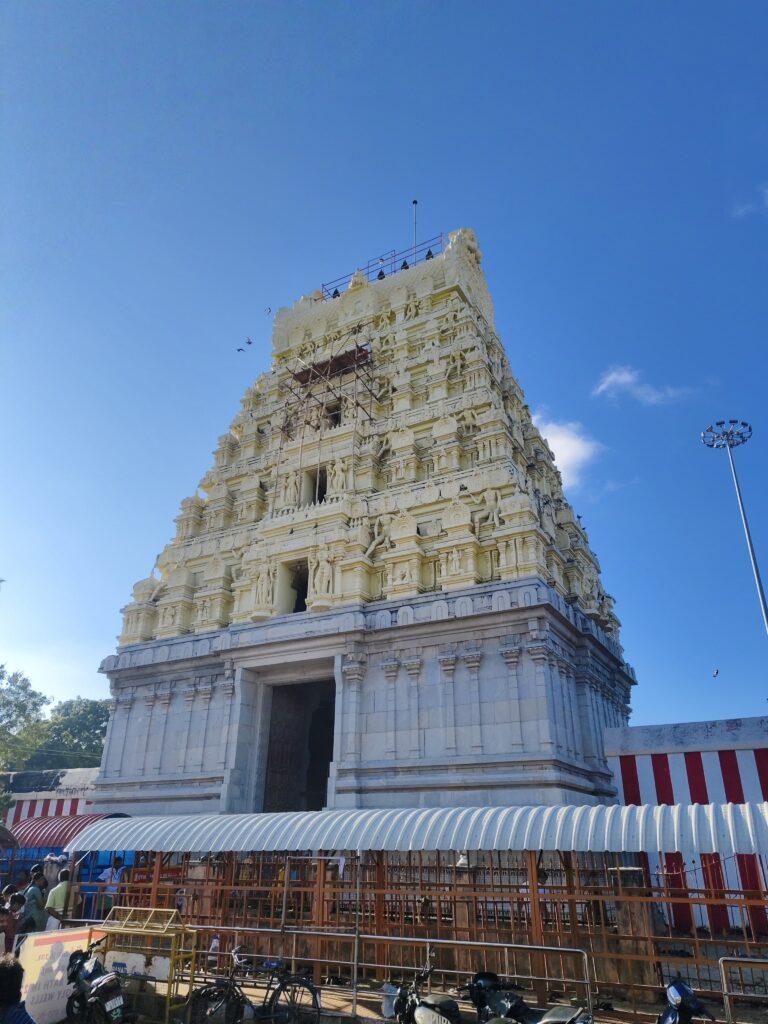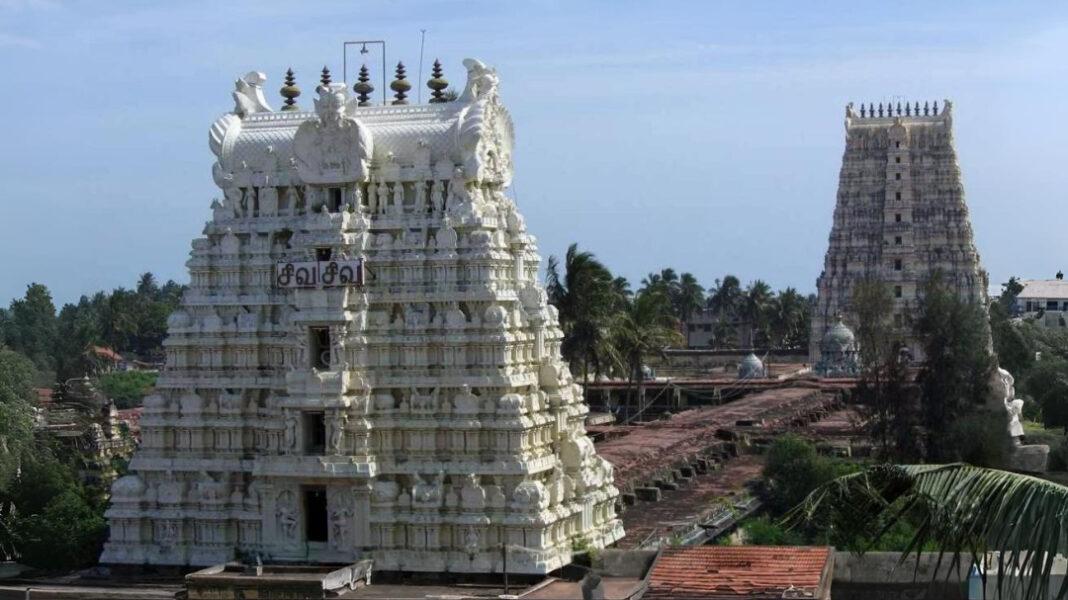Rameshwaram is a small town in Tamil Nadu, India. It is one of the holiest Hindu pilgrimage sites. This town sits at the tip of Pamban Island. It is famous for the Ramanathaswamy Temple. This temple is one of the twelve Jyotirlingas dedicated to Lord Shiva. Rameshwaram has beautiful beaches, vibrant coral reefs, and rich marine life. It combines religious importance with natural beauty.

In this guide, you will discover:
- The history and significance of the Rameshwar Jyotirlinga (Ramanathaswamy Temple)
- Nearby attractions such as Dhanushkodi, Gandhamadhana Parvatham, and other temples
- Detailed temple highlights and legends
- How to plan your trip: transport, budget, accommodation
- Estimated expenses and suggested itineraries
- Nature and environment: beaches, birdlife, and more
This article offers a simple plan and important details on How to Reach Rameshwaram Jyotirlinga ? Travel Guide & Budget Planning in 2025. It’s great for both devoted pilgrims and curious travelers.
Contents
Rameshwar Jyotirlinga: Ramanathaswamy Temple
Historical Background
- Origin: Believed to have been built by Lord Rama to worship Lord Shiva after defeating Ravana, fulfilling his pledge to Shiva for victory. (Legend of the ram-setu bridge to Lanka.)
- Architecture: Dravidian style with 22 holy water tanks (Theerthams), longest temple corridors in Asia (nearly 1.3 km).
- Construction: Built in the 7th century CE. It was later renovated by the Chola, Pandya, and Nayak dynasties from the 12th to the 17th centuries.
Religious Significance
- One of the twelve Jyotirlingas where Shiva is worshiped as a column of light.
- Rituals: Pilgrims take a dip in the sacred tanks (like Agni Theertham, Surya Theertham) before entering the sanctum.
- Best Time to Visit: Maha Shivaratri (February/March) and Kartik Purnima (October/November).
Highlights & Must-See Features
Feature Description Main Sanctum Houses the Shiva Lingam made of stone brought by Lord Rama. Corridors Intricate carvings depicting scenes from epics. Theerthams 22 sacred water bodies with healing properties. Mandapams Stunning pillared halls like the Chandra and Sesha Mandapam.
Places to Visit Near Rameshwaram Jyotirlinga ?
1. Dhanushkodi
Location: 18 km from Rameshwaram town, at the island’s southeastern tip.
History & Legend
- Ancient Port: Once an active seaport and pilgrimage stop on the route to Sri Lanka.
- 1964 Cyclone: A devastating cyclone submerged much of the town; only ruins remain today.
- Mythology: Named after the “Bow’s End” of Lord Rama’s bridge (Ram Setu) to Lanka.
Why Visit?
- Ghost Town Ruins: Abandoned church, railway station, and customs office offer haunting vistas.
- Ocean Views: Spectacular sunrise over the Bay of Bengal and Indian Ocean.
- Adventure: Jeep safaris on the sandy shore and shallow sea walks at low tide.
2. Gandhamadhana Parvatham
Elevation: ~40 ft above sea level, highest natural point on Pamban Island.
Legend & Significance
- Rama’s Prayer: Site where Lord Rama offered darbha grass to Brahma and received his Atmalinga.
- Panorama: Sweep of coral waters, Pamban Bridge, and mainland coast.
Features
- Shrine: Small temple dedicated to Lord Rama and sage Viswamitra.
- Viewpoint: Stone benches marking cardinal directions for unobstructed views.
3. Kothandaramaswamy Temple
- Location: About 4 km northeast of the main town, on the seashore.
- Deities: Lord Rama, Sita, Lakshmana, and Hanuman.
- History: Built in the early 17th century by the Sethupathy rulers of Ramanathapuram. This was to honor Rama’s efforts in building the bridge. The temple’s name “Kothanda” refers to Rama’s bow.
- Architecture: This is in the Classical Dravidian style. It has a five-tiered gopuram, rock-cut sculptures of Vishnu’s Dasavatara, and a large prakaram for walking around.
- Festivals: Rama Navami (April), grand car festival in Chaitra month.
4. Panchamukhi Hanuman Temple
- Location: Adjacent to the Ramanathaswamy Temple complex.
- Deity: Lord Hanuman in his five-faced (Pancha-mukha) form—symbolizing five cosmic energies.
- History: Believed to have been consecrated in the 12th century during the Chola period and renovated by Nayak kings in the 17th century.
- Architecture: An open-pillared hall features detailed floor carvings. The central sanctum holds a 6-foot-high granite murti.
- Unique Legend: Legends say prayers here grant unwavering courage and remove obstacles.
5. Pancha Linga Temple (Five Lingams)
- Location: Within walking distance of the main Ramanathaswamy Temple.
- Dedication: Five Lingams worshiping Shiva’s five elemental forms (Earth, Water, Fire, Air, Ether).
- History: Established by early Pandya kings (8th–10th centuries); expanded under the Nayaks.
- Architecture: Five separate Vimanas (towered shrines) aligned east–west, each with its own theertham (tank).
- Festivals: Maha Shivaratri sees special poojas at each lingam, drawing thousands.
6. Agni Theertham
- Type: Sacred sea-shore bathing spot on the eastern seaboard of Pamban Island.
- Legend: Named after Agni (fire god), who purified the sea water here; the theertham is believed to cleanse sins.
- History: Venerated since antiquity; mentioned in Tamil Sangam literature (c. 300 BCE–300 CE).
- Rituals: Pilgrims perform ‘tirumanjanam’ (ablutions) before temple entry, especially at sunrise.
7. Jada Theertham
- Type: Freshwater spring located within the Ramanathaswamy Temple complex.
- Legend: Sprung from Shiva’s matted hair (Jada), symbolizing life and purity.
- History: Carved mandapam around the pond built by Pandya kings (12th century).
- Healing Beliefs: Locals say a dip here eases ailments like joint pains and skin conditions.
8. APJ Abdul Kalam’s Birthplace & Home Museum
- Birthplace: Avul Pakir Jainulabdeen Abdul Kalam was born on October 15, 1931. His humble thatched house was in the Pei Karumbu Panchayat on Rameshwaram Island.
- Family Background: Kalam’s father was a boat owner and imam of the local mosque; his mother was a homemaker. The family home reflected modest living and strong community ties.
Cultural Context: Understand Kalam’s humble upbringing amidst Rameshwaram’s spiritual ambience
Location: Dhanuskodi Road, Wailing Pond, Rameshwaram (within walking distance of the Ramanathaswamy Temple).
Establishment: Converted into a museum in 2014 by the Government of Tamil Nadu to honor Kalam’s legacy and inspire young minds.
Architecture & Layout: Restored original structure with a red-tiled roof and simple interiors. The museum complex also includes:
- Cultural Context: Understand Kalam’s humble upbringing amidst Rameshwaram’s spiritual ambience
How to Reach Rameshwaram Jyotirlinga ?
- By Air Nearest airport: Madurai (170 km). Taxi or bus from Madurai (~4 hours).
- By Train Rameshwaram Railway Station: Direct trains from Chennai, Madurai, Trichy.
- By Road NH87 connects to Ramanathapuram; regular TNSTC buses from major cities.
- Local Transport Auto-rickshaws, cycle rickshaws, taxis; rent a bike or scooter.
Suggested Itinerary (3 Days)
- Day 1: Arrive & set up
- Check-in by noon, relax
- Evening aarti at Ramanathaswamy Temple
- Day 2: Temple hopping
- Morning dip at Agni Theertham
- Visit Ramanathaswamy Temple & Pancha Linga
- Lunch, then Kothandaramaswamy Temple
- Evening at Jada Theertham & Hanuman Temple
- Day 3: Dhanushkodi & nature
- Early drive to Dhanushkodi for sunrise
- Off-road exploration
- Return via Gandhamadhana Parvatham
- Depart by evening
Budget & Expenses
Category Budget (per person per day, INR)
- Accommodation: 800–2,000 Budget guesthouses to mid-range hotels.
- Food & Beverages: 300–600 Simple South Indian meals.
- Local Transport: 200–400 Auto-rickshaw or scooter rental.
- Sightseeing: 0–500 Temple donations and jeep safari to Dhanushkodi.
- Miscellaneous: 200–300 Snacks, water, and souvenirs.
Total Daily: ~1,500–3,800
Estimated Total for 3 Days: ₹4,500–11,400 per person.
Nature & Environment near Rameshwaram Jyotirlinga
Beaches & Marine Life
- Coral Reefs: Part of the Gulf of Mannar Marine National Park, rich in coral and fish.
- Snorkeling & Scuba: Available near Pamban and Dhanushkodi shore.
Flora & Fauna
- Birdwatching: Migratory flamingos, sea gulls and sandpipers at Anaikatti and Palk Strait.
- Vegetation: Casuarina groves, palm-lined beaches.
Climate & Best Time to Visit
- Winter (Oct–March): Pleasant (20–30°C), ideal for pilgrimage and sightseeing.
- Summer (Apr–Jun): Hot and humid (30–40°C).
- Monsoon (Jul–Sep): Heavy rains, some attractions limited.
Why You Should Visit Rameshwaram Jyotirlinga ?
- Spiritual Merit: One of the most sacred Jyotirlingas with deep mythological roots.
- Cultural Experience: Ancient Dravidian architecture, vibrant local customs.
- Natural Beauty: Untouched beaches, clear waters, and unique coral ecosystems.
- Accessible & Economical: Good transport links and budget-friendly options.
Travel Tips & Practical Advice
- Dress Code: Modest clothing; shoulders and legs covered in temples.
- Temple Etiquette: Remove footwear, maintain silence, donate modestly.
- Health: Carry sunscreen, stay hydrated, avoid street food if sensitive.
- Local SIM & Connectivity: Good mobile coverage; pick up a local SIM at Madurai or Ramanathapuram.
- Language: Tamil and English widely spoken.
Conclusion & Quick Reference
Rameshwaram is a perfect blend of religion, history, and nature. This island offers something for everyone. Find spiritual peace at the Jyotirlinga. Take an adventurous drive to ghostly Dhanushkodi. Enjoy a peaceful walk on coral-strewn shores. Plan for 2–3 days, a budget of ₹5,000–12,000, and respect the local customs to make your pilgrimage both memorable and smooth.
May your journey to Rameshwaram be blessed with serenity and divine grace!



